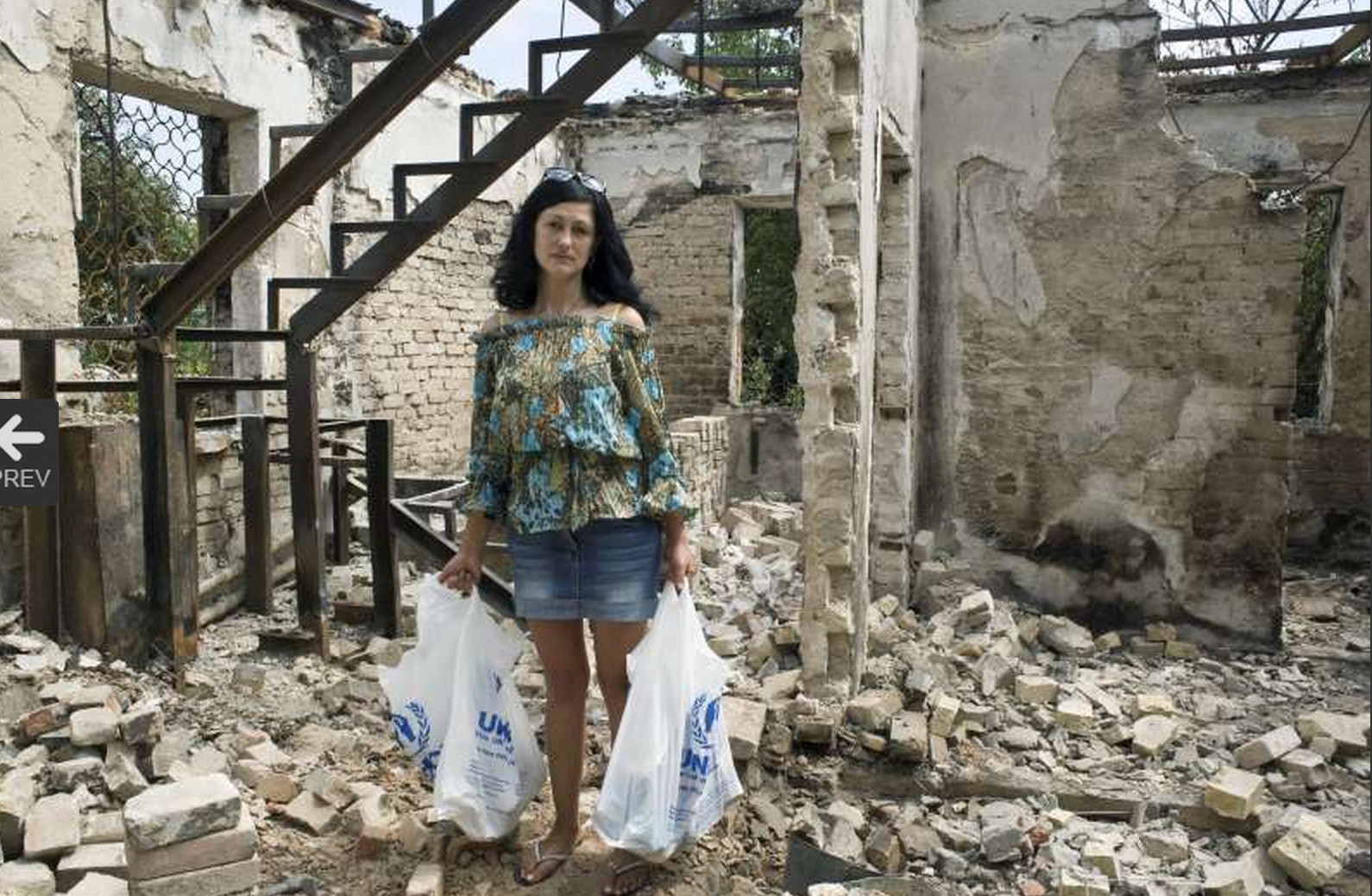January has been a cruel month for the prospects of peace in Ukraine. As the international community mulls new measures against Russia and continues to debate how to best address the conflict, the fighting has reached new levels of intensity. The prospects of an all out civil war in Eastern Europe are increasing day-by-day.
An Airport Battle–Terminal by Terminal
The heaviest fighting this month has been around the city of Donetsk, the capital of the self-proclaimed Donetsk People’s Republic (DNR). Although Ukrainian forces long ceded control over most of the city, they still held the international airport. Fighting over the airport started in September, and despite several ceasefires control over the airport terminals was divided between government and DNR forces by the end of December. Intense fighting with numerous assaults and counterassaults started on January 12 before DNR forces finally took control of the new terminal building on January 21 after exploding the second floor of the terminal, collapsing it on Ukrainian forces whose last point of control was the floor below.
The battle left the once shiny airport, newly rebuilt in 2012, in complete ruins. Although the airport ceased operations in May 2014, it retained symbolic importance for both sides of the conflict. The loss of the airport and videos released online of captured Ukrainian soldiers being paraded through the streets of Donetsk and tortured by DNR forces is a serious blow to the morale of the Ukrainian military.
The fall of Donetsk International Airports also opens up new opportunities for the separatists to attack key positions to the north of Donetsk. This, along with new assaults in the neighboring Lugansk People’s Republic to secure additional border crossings with Russia, is stretching Ukrainian resources thin. Russian convoys of soldiers, equipment, arms and consumer goods continue to flow across the border, reinforcing separatist areas and sustaining the conflict.
War Crimes
With the increase in fighting, the UN Security Council met last week to discuss the events in Ukraine. The meeting came just a day before UN officials announced the death toll from the conflict surpassed at least 5,000 people since its start just nine months ago. As with previous Security Council meetings on Ukraine, there were calls to reinvigorate the Minsk Protocol agreed upon in September to pave the way for more lasting peace talks between Ukraine and Russia. There was also a lot of finger pointing at Russia by Western members of the council and continued Russian defiance. The meeting ended with a condemnation of the recent fighting and no action plan.
It doesn’t appear that separatists are listening to condemnations though. Over the weekend a new offensive saw heavy shelling of civilian areas of the seaside town of Mariupol, killing at least 30 civilians. The city holds both symbolic and strategic value as it is a major port city held by Kiev on the route that could form a land bridge between Russia and Russian-annexed Crimea. Capturing the city would help separatists consolidate their gains throughout Eastern Ukraine as well as draw Ukrainian forces even thinner than they currently are.
Although Ukrainian forces and the Russian-backed separatists have exchanged blame for the attack, OSCE monitors reported the shell craters showed the rockets came from territory controlled by the separatists. The attack is likely the latest war crime in a conflict that has discriminated little between military forces and civilians.
A Divided Security Council
A draft statement condemning the violence and calling for a formal investigation into the shelling failed to gain the required unanimous Security Council support on Saturday as Russia failed to back the statement. Yet given the latest atrocity, the UN Security Council again met in an emergency meeting yesterday to address the situation in Ukraine.
Much like the meeting five days earlier, there were renewed calls for a durable peace process and condemnations of the recent violence. Western members spoke forcefully about the need for Russia to halt support of the separatists, while Russia rebuked their criticism and continues to deny any active role in the conflict. Again the meeting ended with no concrete action plan as the Security Council stalls in much the same way the peace process has.
The inability of the Security Council to come together on Ukraine is exacerbating the wider conflict as both Russia and the West seek out new ways to exact pressure on the other. Following the attack on Mariupol, the US and EU hinted at new sanctions even as Russia struggles under the existing ones. Russian remains defiant amid the threats, appearing to be preparing for a long battle as it continues to add more troops to the fight. Despite the Russian ruble losing half its value in the past seven months and the downgrading of its credit rating to junk status by Standard & Poor’s yesterday, the Russian view that Ukraine represents an existential conflict between itself and the West means there is no easy exit for it. Despite the ailing economy and rapidly rising food costs, ordinary Russians appear to back this perspective and the expensive battle for Ukraine that comes with it.
Some analysts believe the recent surge in violence is posturing designed to set the stage for peace talks, but for now peace looks to be a long way off. Next month will mark the one year anniversary of the bloody crackdown on the Maidan that led to the ouster of then-President Viktor Yanukovych and the unrest that spiraled into the current war. Many Ukrainians believed the Euromaidan revolution would seal its future as a westward looking country but a year later, Ukraine’s future is far from determined. As the war drags on, the stakes continue to rise, making an all-out civil war more and more likely.
